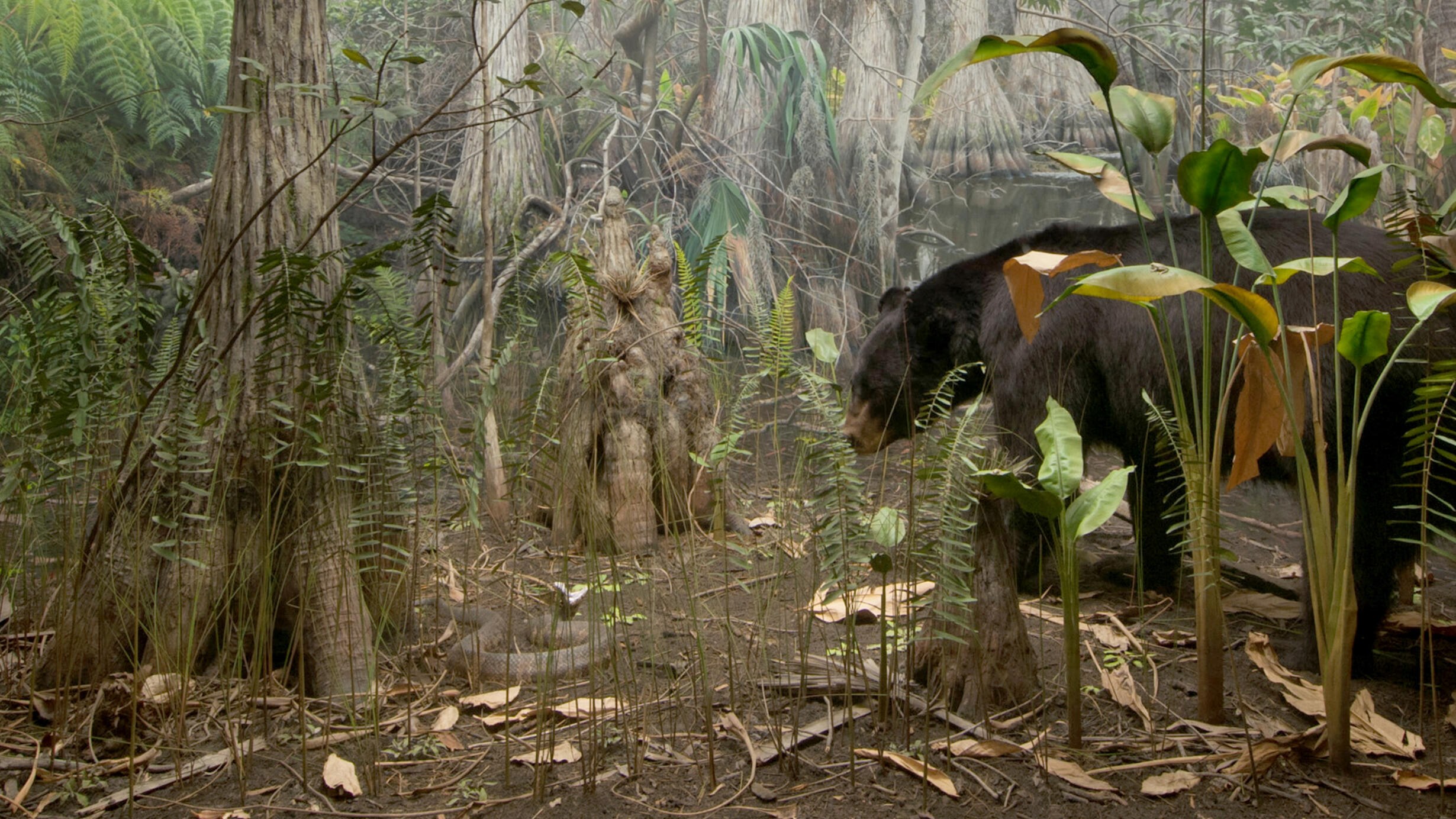Black Bear
Part of Hall of North American Mammals.

December Morning, Southern Florida
A black bear has startled a venomous cottonmouth snake in this Florida cypress swamp. The snake exposes its fangs in threat—but neither animal is likely to attack. It’s not worth the risk.
As this bear moves on to a safer meal, it will have a lot to choose from. Black bears eat almost anything, so they can survive in many landscapes—northern conifer forests, temperate woodlands and even here, in the warm swamps of the South. Unlike black bears in colder climates, this bear has no need to hibernate, so it is active in December.
Cypress Swamp
Near Lake Placid, Florida
Bald cypress trees dominate this Florida swamp. Dark bands on their trunks show the high-water mark of the summer rainy season. Now, in December, water levels have dropped. The flared trunks stabilize the trees in the soggy soil, as do the knobby “knees” that grow upward from their roots.
Bald cypresses are conifers—they have seeds inside cones and needlelike leaves. But in this winter scene, their branches are bare. Unlike most conifers, bald cypresses are deciduous and shed their leaves each autumn. The spiny fronds along the cypress trunks belong to giant airplants, a type of epiphyte—a plant that lives on another.